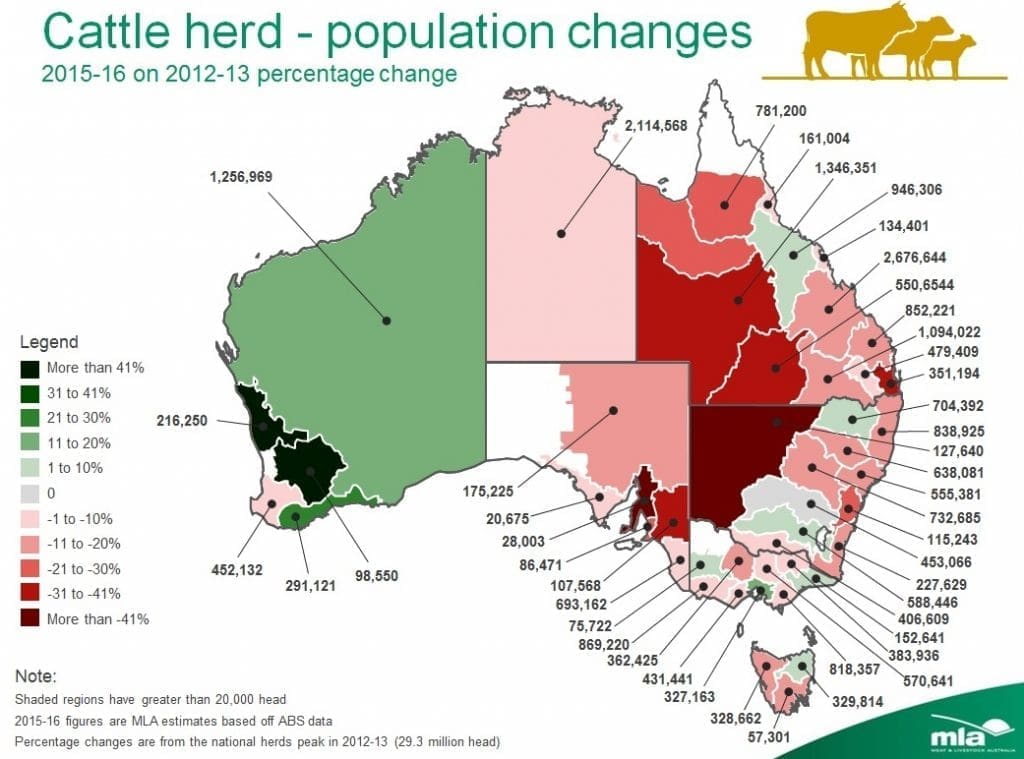
Meat & Livestock Australia has produced this interesting info-graphic this week, pointing to regions of Australia that have suffered most, and least, in terms of drought-driven herd decline over the past two or three years.
Illustrated above is the percentage change in each region from where the herd peaked in 2012-13, to where the cattle population was estimated to be in 2015-16. The different shades of green or red represent the magnitude of rises and falls, respectively, while the numbers are the estimated herd size in each region.
As expected, the herd in virtually every region of Queensland (representing about 45 percent of the national total herd) declined over the period, with some western regions dropping by up to 40pc from their peak three years ago. One notable exception is the Townsville region, where the small rise was more than likely attributed to a greater number of cattle transiting through for live export than has previously been the case.
Similarly, the small shade of green in northern NSW is likely the result of more cattle on feed in the region than previously, combined with more transiting through.
WA is the only state to buck the national trend, with the number increasing in most regions, on the back of generally better seasonal conditions. However it should be noted that WA started from a very small base, with the state’s total currently estimated at 2.3 million head – 300,000 head less than the Fitzroy region, alone, in Queensland.
Furthermore, as a result of better rainfall over the three year period, the herd size in pockets of southern NSW and Victoria were less impacted than most other regions of the country.
Looking forward, it’s easy to identify the regions most likely to retain whatever stock they can in response to what has been fantastic winter/spring rainfall. It’s also quite clear where the strongest restocking strength will come from, and considering the magnitude in some of the falls, this will more than likely last for the duration of 2017.
MLA currently estimates the national beef herd to be 26.2 million head, which is the lowest level it has been in 20 years. Provided the momentum from the southern pasture growing season is carried through to the north, expectations are for the national herd to eventually rise to 28 million head by 2020.
Click this link to see a higher-res version of the info-graphic.
Source: MLA
